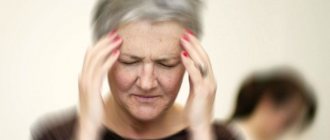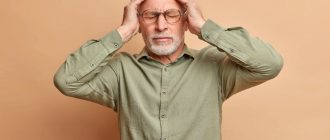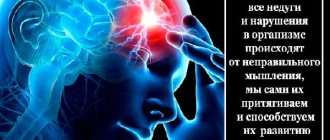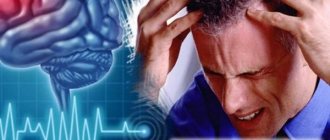St. Petersburg State Budgetary Healthcare Institution "Nikolaevskaya Hospital"
July 19, 2019
What is a stroke
Effective prevention of cerebral stroke is impossible without knowledge of the causes of the development of this disease.
A stroke is a serious (acute) problem with blood circulation in the brain. The cause may be a rupture of some, not necessarily large, vessel - this type of stroke is called hemorrhagic. Or a blood clot that blocks the flow of blood is a stroke, respectively, an ischemic stroke.
Depending on which part of the brain was damaged, the neurological functions for which it was responsible suffer. Someone loses their speech. Someone is paralyzed - partially or completely. Some people have breathing problems. Some people even die.
Stroke statistics are disappointing: 31% of patients who have suffered a stroke require special care, 20% cannot walk independently, and only 8% return to normal life after long rehabilitation. But the worst part is that stroke is difficult to predict. It’s not for nothing that it’s called a stroke: an acute brain disorder develops suddenly and quickly. Often literally out of nowhere: just now the person was laughing and joking, and now they call him an ambulance.
Who's at risk
Some people are more vulnerable to developing a stroke than others. And most often these are those who:
Suffering from hypertension. This is the most common cause of strokes.
Has some kind of heart disease (for example, heart failure or arrhythmia).
Suffering from diabetes. Diabetes damages blood vessels, including those of the brain, increasing the risk of hemorrhages.
Is overweight.
Takes certain medications. Dangerous medications include those that alter estrogen levels. For example, birth control pills.
Leads a sedentary lifestyle.
Has high blood cholesterol levels.
Smokes.
Suffering from sleep apnea.
Over 55 years old. According to statistics, every decade after age 55, the risk of having a stroke doubles.
Has a family history of strokes: one of his close relatives became victims of a stroke.
Is a man. Women have a significantly lower risk of stroke.
If at least a few points can be attributed to you, you need to take care of yourself. Preferably today.
What to do to prevent stroke
Stroke prevention comes down primarily to lifestyle modifications. Here's what, according to experts from a reputable research organization, should be done first:
- Control your blood pressure People suffering from arterial hypertension are especially likely to suffer from strokes. It is they who experience brain hemorrhages (hemorrhagic strokes). Moreover, two scenarios are possible: either one of the brain vessels ruptures, or blood leaks through its wall into the surrounding tissue for some time. In any case, high blood pressure (or pressure surges) plays a major role in this process. And for a hypertensive patient, it is very important to keep the situation under control and regularly take medications prescribed by a doctor to help maintain blood pressure at an optimal level - no more than 130/80 mmHg.
- Control your cholesterol levels Most strokes occur due to narrowing or complete blockage of the arteries in the brain (ischemic stroke). The cause is cholesterol plaques deposited on the walls of blood vessels. To minimize the likelihood of disease, it is necessary to adhere to a diet that involves limiting fat intake. It should be borne in mind that not all fats are harmful to the body (for example, polyunsaturated omega-3 and omega-6 fatty acids are very beneficial).
- Control your blood sugar levels According to statistics, the presence of diabetes increases the risk of stroke by 2.5 times. This is not surprising: diabetics often experience heart failure, excess weight and poor condition of the walls of blood vessels. In addition, when carbohydrate metabolism is disturbed, the rate of removal of water from the body increases, which increases the thickness of the blood. To avoid the development of a stroke, it is necessary to monitor your diet, limit the consumption of fast carbohydrates and monitor blood glucose levels by periodically taking appropriate tests.
- Watch your weight Excess weight brings with it several factors that increase the risk of stroke. This includes an increase in blood pressure, cardiovascular diseases, and the possible development of diabetes. Losing even 4-5 extra pounds will greatly improve your chances of avoiding a stroke.
- Eat more vegetables and fruits At least 4-5 servings (apple, coleslaw, grilled vegetables, etc.) per day. Plant foods lower blood pressure and improve vascular elasticity. And this, in turn, is an excellent stroke prevention.
- Quit smoking And also visit smoking rooms for company. Passive smoking, like active smoking, has a destructive effect on blood vessels.
- Exercise regularly Physical activity reduces the risk of developing all types of stroke. Aerobic training is especially good: walking, running, swimming, cycling, low-impact fitness. The exercises work comprehensively. They help reduce weight, improve the overall condition of blood vessels and the heart, and reduce stress. Try to increase the duration of your daily workouts to at least 30 minutes.
- Manage stress At the moment of nervous tension, a large amount of adrenaline is released into the bloodstream. Glucose levels rise sharply, the heart begins to work more actively, and blood pressure rises. There is a simultaneous load on the vessels, which can lead to a stroke. Of course, it is impossible to completely eliminate stress from life, but it is worth learning to control your reaction to stressful situations. People prone to nervousness may need to consult a doctor - he will recommend sedatives.
- Get an annual medical examination. A timely visit to the doctor will help to identify health problems in time and begin treatment on time. Unfortunately, it is impossible to reduce the risk of stroke to zero. Therefore, in addition to preventive measures, it is important to know what a stroke looks like and what to do if it happens to you or someone around you. Doctors have several hours to save a person. Everyone needs to know the symptoms of a stroke in order to recognize the disease in time.
Stroke is the second (after coronary heart disease) cause of death in Russia. A fifth of patients become severely disabled after a stroke. But many consequences can be prevented if you call a doctor in time.
The first 3-6 hours after a stroke are the “therapeutic window” - the time during which medical care is most effective. Sometimes a person does not immediately notice that something is wrong with him, or thinks that the ailment will go away on its own. Because of this, valuable time is lost. Therefore, it is important to know what a stroke looks like and what to do if it occurs.
Main signs of stroke
1. A sudden and severe headache begins.
2. The man loses consciousness.
3. Balance is disturbed, gait becomes unsteady.
4. Part of the body on one side, for example, half of the face, goes numb.
5. Speech problems appear: it is difficult to pronounce words.
6. Vision is lost in one eye or in both eyes at once.
How to understand for sure that it is a stroke
Ask the person to do a few simple steps:
- Smile. If a person cannot smile or the smile comes out one-sided (and this was not the case before), sound the alarm.
- Speak. Ask the person to repeat a simple sentence after you or recite a poem. After a stroke, articulation is impaired and speech becomes slurred.
- Stick out tongue. If a person cannot do this, if the tongue involuntarily tilts to one side or looks askew, then this is a stroke.
- Raise both arms evenly. With a stroke, a person will not be able to control both hands equally well.
— Raise your hands in front of you and close your eyes. If one arm falls involuntarily, this is a sign of a stroke.
— Write an SMS. Researchers at Henry Ford Hospital noticed that patients who had no other signs of stroke were unable to type a coherent message, instead writing a nonsensical string of words without noticing it.
If a person has failed at least one of the tasks, this is enough to act immediately.
What to do if a person has a stroke
First, call an ambulance. Be sure to describe why you suspect a stroke: the headache began suddenly, the person lost consciousness or balance. Tell us what the patient cannot do: cannot smile, cannot raise both hands, cannot pronounce words.
If you have a stroke, you need professional help as quickly as possible.
After calling an ambulance, place the person on pillows, the elevation should start from the shoulder blades. Provide access to fresh air: open a window or door in the room, unfasten tight clothing.
Do not give water or food because organ functions may be impaired and the person may have difficulty swallowing.
If possible, measure your blood pressure. If it is elevated, give the person the blood pressure lowering drug that he usually takes. If there is no such pill, do not give anything.
Be healthy!
- Share:
- Livejournal
- Blogs@Mail.ru
- LiveInternet
- MySpace
Print page
What to do if you have a stroke
There are techniques that allow you to identify signs of a stroke yourself. For example, they can be used if someone becomes ill on the street and you suspect a stroke. You need to ask the person to smile, speak, raise both hands. If the victim cannot comply with your request or there is asymmetry, you should immediately call for help and list all the symptoms.
At the same time, you need to provide first aid: lay the victim down, placing a small support under his head, and free him from clothes that are preventing him from breathing. He should not eat or drink or make sudden movements. When vomiting, turn your head to the side.
Further treatment is carried out in a hospital. First, diagnostics are carried out to clarify the diagnosis; computed tomography and magnetic resonance imaging, lumbar puncture and EEG (echoencephalography), angiography are prescribed. Then conservative (basic therapy, treatment of neurological complications) or surgical treatment is prescribed.
After the end of the acute period, rehabilitation is prescribed: massage, physical therapy and other activities, depending on the degree and type of disorder. The patient is observed by a neurologist, physiotherapist, speech therapist, and psychotherapist.
The brain has neuroplasticity: with the right approach, you can recover from a stroke, restore brain function and prevent stroke complications. The key factor is timely initiation of treatment, proper rehabilitation and regular exercise.
According to WHO, about 60% of patients do not require assistance by the end of the first year, and 30% of patients of working age can return to work.
FAQ
Is it possible to recover after a stroke? Yes, you can, but the extent of long-term disability depends on how long the brain damage caused by the stroke lasts. Many stroke survivors remain disabled due to mental and physical disabilities. They need support from family and friends to help them cope.
How can you avoid having another stroke? It is important to maintain a healthy lifestyle and be sure to take medical treatment such as aspirin and blood pressure medicine. People who have had a stroke are more likely to have another stroke. If you have an irregular heartbeat (atrial fibrillation), it is also important to take this into account and seek medical help to prevent another stroke. Consult your doctor regarding this matter.
Is it possible to prevent a stroke? Maintaining a healthy lifestyle, monitoring and correcting blood pressure, heart rate, controlling sugar and cholesterol. Regular screening examinations of the heart and blood vessels of the neck will also help prevent the possibility of a stroke.
We tried to briefly describe the extremely dangerous disease stroke . Remember, most strokes can be prevented by having the necessary information and monitoring your health with a neurologist. If you have questions about the disease or its prevention, ask them in the comments.










